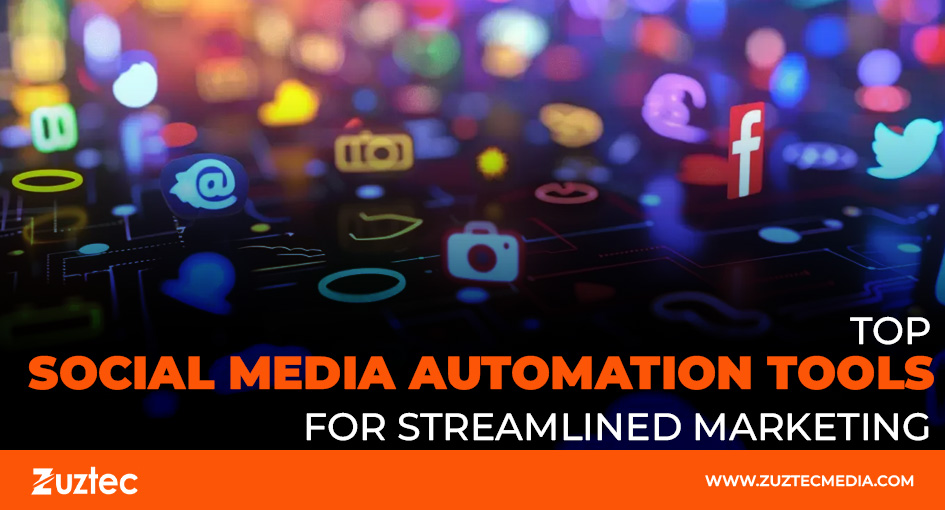
Top Social Media Automation Tools For Streamlined Marketing
Managing multiple social media platforms can quickly become overwhelming for any business or marketer. From scheduling content to responding to messages and tracking performance, staying on top of everything is time-consuming. That’s where social media automation tools come in. These tools are designed to simplify your workflow, save time, and help maintain a consistent online presence. Whether you’re managing a brand, a personal page, or multiple client accounts, automation can make your job significantly easier.
These tools allow users to schedule posts in advance, monitor engagement, and analyze performance metrics. They support various platforms, including Facebook, Instagram, LinkedIn, Twitter, and more. This frees up time for other marketing efforts and reduces the pressure of daily content creation.
Another major benefit of automation is consistency. Posting regularly helps maintain engagement and reach, and automation ensures your schedule doesn’t slip. Some tools even suggest the best times to post based on past performance, helping you get better results with less effort.
These tools help marketers identify what’s working, what needs improvement, and where to focus their energy. This data-driven approach can improve campaign effectiveness over time.
By adopting these tools, marketers can increase efficiency, enhance audience engagement, and scale their efforts more effectively. It’s no longer just about being present online—it’s about being strategic and intentional with every post.
Social Media Automation Tools That Boost Productivity
One of the biggest advantages of tools is the ability to schedule content in advance. Rather than posting manually every day, marketers can line up their posts weeks ahead, ensuring a steady stream of content. This keeps profiles active and maintains brand visibility, even during weekends, holidays, or busy work periods.
Popular automation tools like Buffer, Hootsuite, and Later offer intuitive dashboards where users can manage multiple accounts in one place. They allow for drag-and-drop scheduling, visual content planning, and team collaboration features. This makes it easier for teams to stay organized and aligned on strategy.
Automation tools also streamline content curation. Instead of spending hours finding articles or visuals to share, some platforms offer built-in libraries or RSS feed integrations. These features help marketers share relevant content without extensive manual effort.
Engagement features are also included in many tools. Users can monitor comments, mentions, and messages from a central inbox. This enables faster response times and ensures no interaction goes unnoticed. Some tools even include auto-response functions, helping businesses stay connected with followers around the clock.
Choosing The Right Platform For Your Business
With so many automation tools available, selecting the right one can feel overwhelming. Some tools are better suited for small businesses, while others cater to large teams with complex workflows.
For example, Buffer is great for startups and small teams because of its simplicity and affordable pricing. Hootsuite offers robust reporting and collaboration tools, making it ideal for larger companies. Sprout Social provides in-depth analytics and CRM features, which are valuable for brands focused on customer engagement.
Each tool has unique strengths. Some platforms offer visual planning for Instagram grids, while others emphasize scheduling flexibility or analytics. Before choosing a tool, evaluate what features are most important to you. Do you need bulk uploading, hashtag suggestions, or detailed performance reports?
Integrations also matter. A good automation tool should work well with other software you use, such as Canva for design, Google Analytics for tracking, or Slack for team communication. A well-integrated platform saves even more time by reducing the need to switch between apps.
Best Practices For Using Automation Tools Effectively
While automation offers many benefits, it’s important to use it wisely. The goal is not to make social media completely hands-off but to manage it more efficiently. Human interaction and timely responses still matter and play a big role in building relationships with your audience.
Even when scheduling posts in advance, always keep an eye on current events. A post that seemed fine a week ago could appear insensitive today. Being ready to pause or adjust your schedule ensures your brand stays relevant and responsible.
Avoid over-automation. Use scheduling for consistency, but continue to engage with your audience in real time when possible. Liking comments, responding to messages, and jumping into trending conversations helps keep your brand human and approachable.
When applying social media automation tools, remember that strategy still matters more than technology. The tools can make execution easier, but it’s your message, tone, and timing that create real connections with your audience.
The Future Of Marketing With Automation Tools
As platforms evolve and competition increases, marketers need to be efficient, data-driven, and always present. Over time, more tools are incorporating AI-driven features to suggest content ideas, predict optimal post times, and even write captions.
Brands that invest in the right tools and use them wisely will stay ahead of the curve. Social media success isn’t just about being active—it’s about being intentional. With well-executed social media automation tools, marketers can focus on building stronger relationships and delivering more impactful campaigns.

